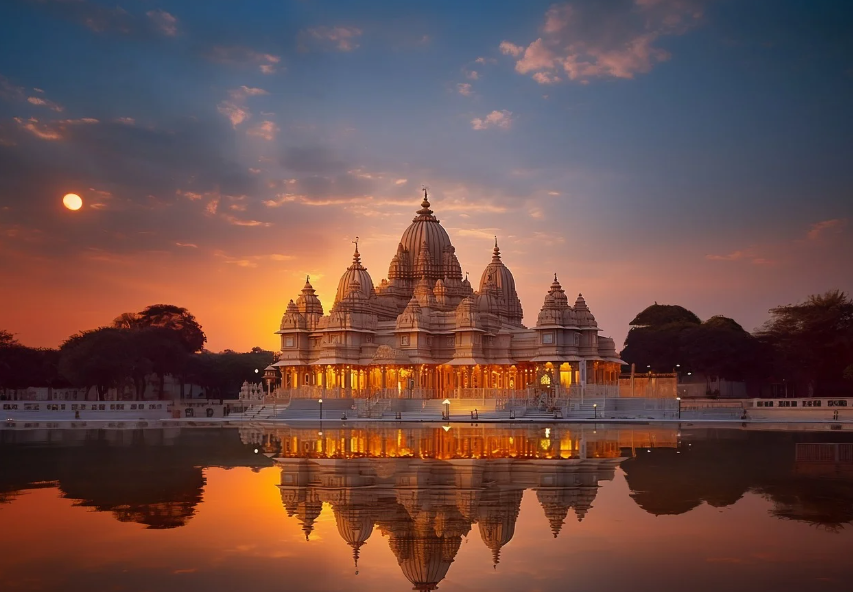In the vast expanse of Hindu mythology and philosophy, the character of Rama stands as an epitome of virtue, righteousness, and devotion. Rama, the seventh avatar of Lord Vishnu, is not just a revered figure in religious narratives but a beacon of philosophical wisdom that transcends time and cultural boundaries. His life, as depicted in the epic Ramayana, serves as a profound guide, offering insights into dharma, devotion, and the intricate tapestry of human relationships. In this exploration, we delve into the philosophy of Rama, unraveling the layers of his teachings and their enduring relevance.
1. The Embodiment of Dharma:
Rama is often hailed as the ‘Maryada Purushottama,’ the epitome of righteousness. His unwavering commitment to dharma, the moral and ethical order, is a cornerstone of his philosophy. From his exile to his role in the battle against Ravana, every action of Rama is guided by a profound sense of duty and righteousness. His life becomes a testament to the idea that adhering to dharma is not always easy, but it is the path that leads to ultimate fulfillment.
2. The Ideal King and Leader:
Rama’s philosophy extends beyond personal virtue to his role as a king. His reign in Ayodhya is often idealized as ‘Ram Rajya,’ a kingdom where justice, prosperity, and harmony prevail. As a leader, Rama exemplifies the qualities of selflessness, fairness, and a deep sense of responsibility toward his subjects. His leadership philosophy revolves around serving the people with humility and integrity.
3. The Devoted Husband:
Central to Rama’s philosophy is his relationship with Sita, his wife. Rama’s unwavering commitment and love for Sita, despite the challenges they face, embody the principles of devotion and loyalty. His actions in the face of Sita’s abduction, his unwavering trust in her purity, and his eventual reunion with her symbolize the profound connection between dharma and love.
4. Lessons in Detachment:
Rama’s life, particularly his acceptance of exile and the subsequent separation from Sita, offers profound lessons in detachment. He endures personal sacrifices without attachment, demonstrating that true detachment doesn’t mean lack of love but rather a transcendence of personal desires for the greater good. Rama’s journey becomes a profound exploration of the balance between duty and personal emotions.
5. Facing Adversity with Grace:
The exile and the challenges that follow, including the abduction of Sita, reveal Rama’s ability to face adversity with grace. His calm demeanor, resilience, and trust in the divine order, even in the darkest moments, become lessons in maintaining equanimity amid life’s trials. Rama’s philosophy encourages facing challenges with a steady mind and an unwavering commitment to dharma.
6. Rama and Hanuman: A Lesson in Devotion:
The bond between Rama and Hanuman is emblematic of devotion. Hanuman’s unwavering dedication to Rama, his selfless service, and the fearless devotion with which he leaps across the ocean to find Sita exemplify the heights of spiritual devotion. Rama, in turn, acknowledges and cherishes this devotion, illustrating the reciprocal nature of true devotion in spiritual philosophy.
7. The Battle with Ravana: Confronting the Inner Demons:
The epic battle between Rama and Ravana isn’t just a physical confrontation; it’s symbolic of the eternal struggle between good and evil, dharma and adharma. Ravana, with his ten heads representing various vices, becomes an allegory for the internal demons that every individual must confront. Rama’s victory underscores the philosophy that righteousness and virtue ultimately triumph over darkness.
8. Rama’s Exemplification of Humility:
Despite being a divine prince and later a king, Rama embodies humility. His interactions with sages, his acceptance of advice, and his respect for the opinions of his subjects showcase humility as a virtue. Rama’s philosophy suggests that humility is not a sign of weakness but a reflection of inner strength and wisdom.
9. The Larger Cosmic Design:
Rama’s philosophy acknowledges the larger cosmic design. His acceptance of events, whether joyful or challenging, as part of the divine plan reflects a deep understanding of the interconnectedness of all things. This cosmic perspective adds a spiritual dimension to his philosophy, emphasizing surrender to the divine order.
10. Legacy and Enduring Influence:
Rama’s philosophy, as depicted in the Ramayana, has left an indelible mark on Hindu philosophy and culture. His teachings, often conveyed through dialogues with sages and his actions in various life situations, continue to inspire generations. The Ramayana remains a reservoir of wisdom, with Rama’s philosophy serving as a guiding light for those navigating the complexities of life.
Conclusion:
In the grand tapestry of Hindu philosophy, Rama emerges not just as a divine figure but as a living embodiment of profound principles. His life becomes a philosophical treatise, offering insights into the intricate dance of duty, love, devotion, and cosmic order. Rama’s philosophy is not bound by time or cultural constraints; it is a timeless guide that resonates across spiritual traditions, inviting individuals to reflect on the eternal truths that underpin a life well-lived. Through the trials and triumphs of Rama’s journey, we find a philosophy that transcends the pages of ancient scriptures to become a living, breathing guide for the human spirit.



1 Comment
Alexandra
Hey there! Do you know if they make any plugins to assist with Search Engine Optimization? I’m trying to get my blog to
rank for some targeted keywords but I’m not seeing very good results.
If you know of any please share. Many thanks!
You can read similar text here: Eco wool